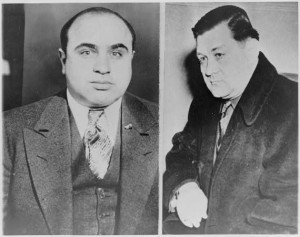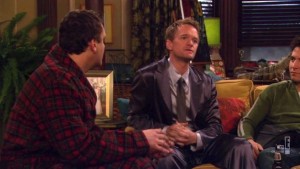It’s that time of year again. With February 14th quickly approaching, it only seems appropriate to discuss the one event on every guy’s mind. The St. Valentine’s Day Massacre, of course.
In an era dominated by bootlegging, gambling, and gangsters (not much has changed), two men emerged as leaders in Chicago’s notorious crime racket. Bugs Moran, leader of Chicago’s north side Irish gang, and Al Capone, head of Chicago’s south side Italian mob fought ruthlessly for control of the city. Forget Cubs versus Sox, these two were the epitome of rivals.
Things came to a head when seven of Moran’s men were famously killed on February 14th 1929, by Capone’s henchmen. Known as the St. Valentine’s Day Massacre, Capone was hoping to kill Moran and take control of the city by sending him a very special “valentine.” Unfortunately for Capone, Moran sniffed out Capone’s attack like bad lasagna (like there is such a thing) and managed to get out of Dodge, just in time.
Aside from their fondness for Tommy guns, there’s one thing that these archenemies had in common, and that was their undying passion for bespoke. Although both were well known for their impeccable style, Moran and Capone differed substantially when it came to their sense of fashion.
A devote Catholic (for a mobster, anyway), Moran was extremely conservative and took his wardrobe very seriously. It’s rumored that after he assaulted his tailor for “gouging prices” (don’t get any ideas), Moran earned the nickname “Bugs” because of his “buggy” behavior.
With slicked back hair, Moran wore fitted three-piece suits in dark, subtle colors. Pairing his high-waisted slacks with a white shirt, narrow collar, and small tie knot, Moran had a reserved sense of style.
On the opposite end of the spectrum, Al Capone’s ostentatious style was a direct reflection of his grandiose personality. Frequently dressed in bold pinstripes, and wide lapels, Capone wore his three-piece suit with an Italian silk shirt, raccoon topcoat, and a matching silk tie and handkerchief. Rarely seen without a cigar, borsalino wide-brimmed hat, and his $50,000 11.5-carat, blinged-out diamond ring, Capone was clearly a supporter of accessorizing.
Whether you reside on the north or south side of Chicago, the key take away here is to always out-dress the competition. Looks can kill, after all.










